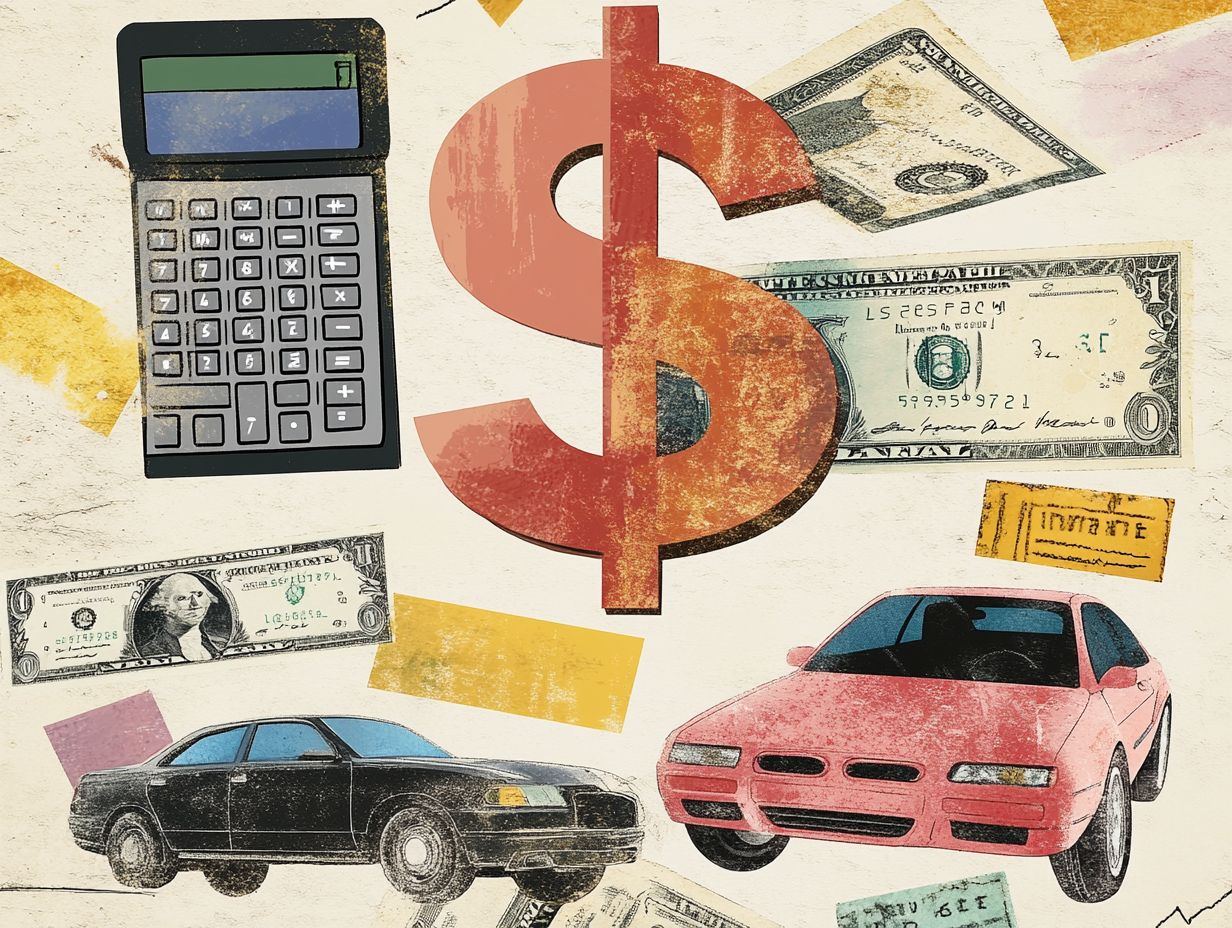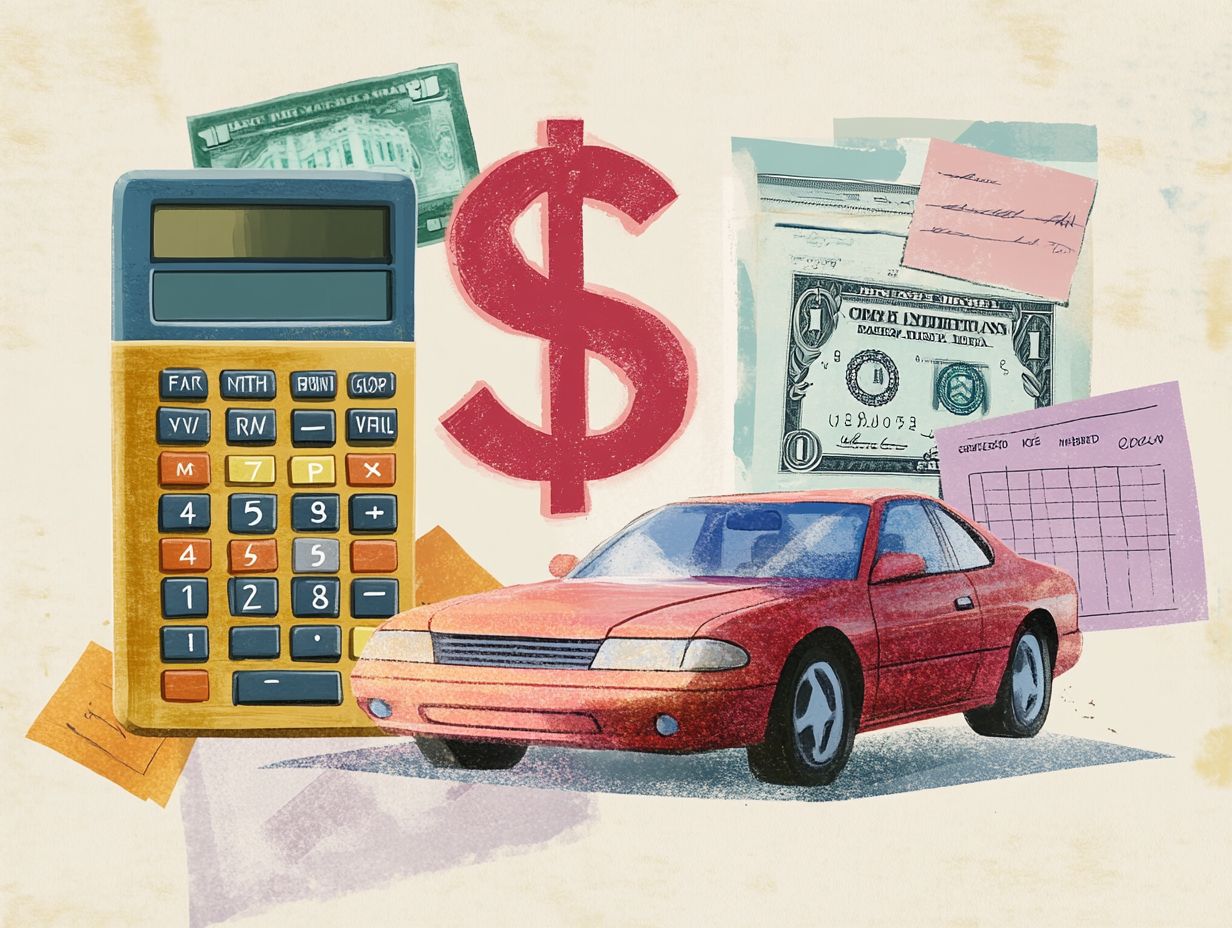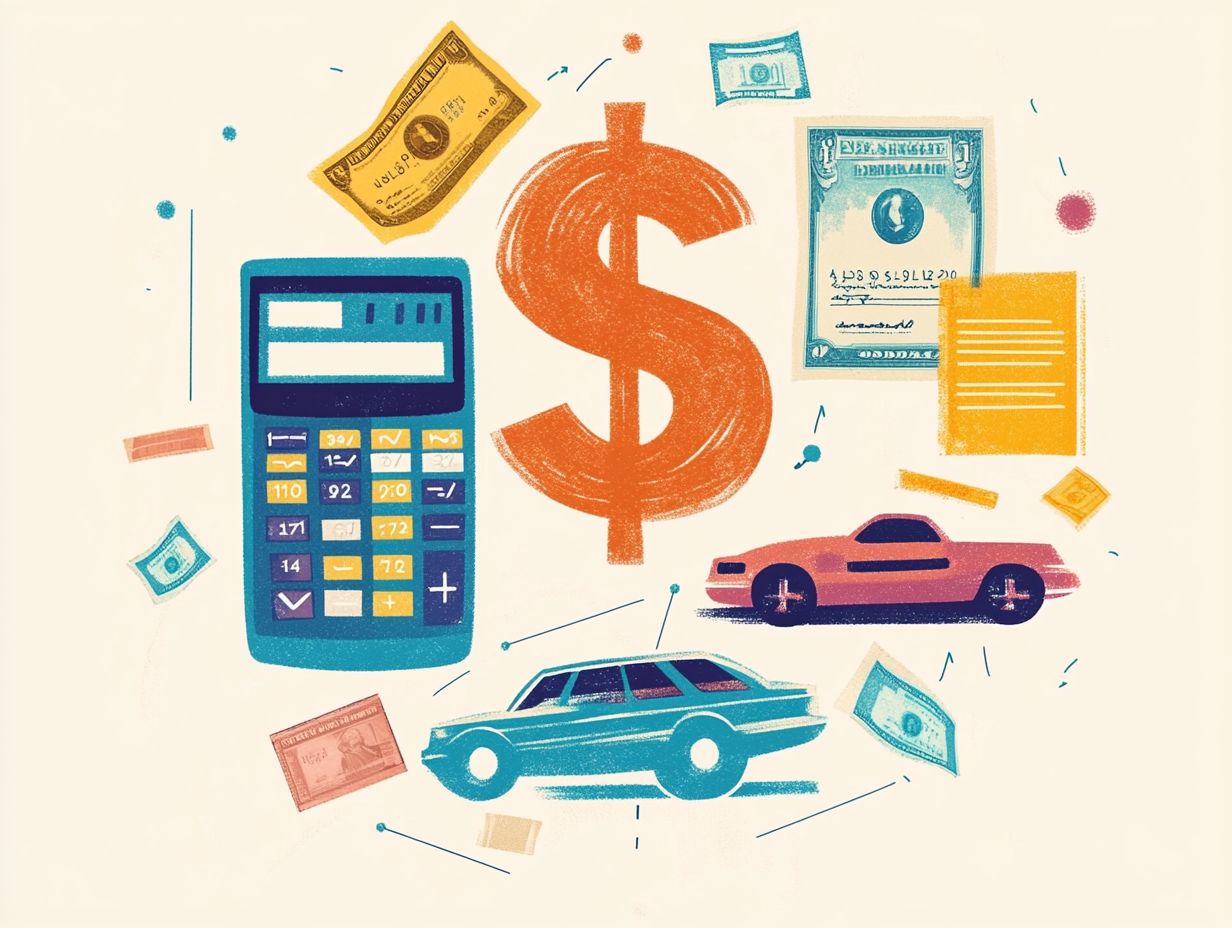What Factors Affect My Auto Insurance Rate?
Navigating the realm of auto insurance can feel overwhelming. The myriad factors that impact your premiums can be confusing.
You may wonder why your rates vary so much. A complex interplay of personal and vehicle-related elements is at work. From your age and driving experience to the specific make and model of your car, every detail matters.
Let s dive into the key factors that affect your insurance costs. This guide will empower you to make informed decisions that could lead to savings!
Contents
- Key Takeaways:
- Understanding Auto Insurance Rates
- Personal Factors that Impact Insurance Rates
- Vehicle-Related Factors that Affect Insurance Rates
- Other Factors to Consider
- Frequently Asked Questions
- What Factors Affect My Auto Insurance Rate?
- How Does My Age Affect My Auto Insurance Rate?
- Will My Driving Record Affect My Auto Insurance Rate?
- Does the Type of Vehicle I Drive Affect My Auto Insurance Rate?
- Why Does My Location Affect My Auto Insurance Rate?
- Can My Credit Score Affect My Auto Insurance Rate?
Key Takeaways:

- Your age, driving experience, and credit score significantly influence your auto insurance rates.
- The type, age, and safety features of your car can also impact your premiums.
- Your location and driving habits matter too. Look for discounts to lower your costs!
Understanding Auto Insurance Rates
Understanding auto insurance rates is essential for drivers like you seeking the best coverage options. Various factors influence how companies like State Farm and Geico determine premium costs.
Factors such as vehicle type, location, and personal information like age and marital status play a significant role in shaping your insurance premiums. This makes it important for you to analyze your auto policies and explore different insurance providers across states like Louisiana, California, and New York.
What Determines Your Insurance Premiums?
Several key factors determine your insurance premiums. These include the specific auto policy you select and the coverage options you choose.
The type of vehicle you drive significantly impacts your insurance costs. For example, high-performance cars or luxury vehicles often incur higher rates due to elevated repair costs and increased theft risk.
Your choice of coverage options like liability, collision, and comprehensive insurance can also influence your premiums. Opting for lower deductibles or higher limits can raise your costs.
Different insurance providers assess risks differently. That s why conducting a thorough comparison of quotes can yield diverse results, impacting your final premium cost. By understanding these elements, you can make informed decisions that may lead to potential savings.
Personal Factors that Impact Insurance Rates
Personal factors play a pivotal role in determining your insurance rates. Key elements like your age, driving experience, and driving record are crucial in what you ll pay for car insurance.
Young drivers and those with a poor claims history often face higher premiums. Conversely, if you have a strong driving record and take advantage of good driver discounts, you can enjoy lower costs.
Your rates are influenced by your driving behavior and credit history. It s essential to stay mindful of these factors.
Age and Driving Experience
Age and driving experience significantly influence car insurance rates. As a young driver, you might find yourself facing steeper premiums due to your limited experience behind the wheel.
This heightened risk is underscored by statistics indicating that drivers aged 16 to 19 are nearly three times more likely to be involved in accidents compared to older, more seasoned motorists. However, as you accumulate time on the road and exhibit safer driving habits, you have the potential to enjoy lower premiums.
Many insurance providers offer discounts for good drivers don’t miss out on great savings! Rewarding those who maintain a clean driving record over time is common practice.
For example, after just a few years of accident-free driving, you may notice reductions in your rates. This highlights how experience not only refines your driving skills but also plays a pivotal role in shaping your insurance costs.
Driving Record and Claims History

Your driving record and claims history play a crucial role in shaping your car insurance premiums. Insurers carefully review your past accidents and driving violations.
Factors like the frequency and severity of your claims can significantly influence the risk calculation (the process insurers use to assess how likely you are to file a claim), which directly impacts the premiums assigned to you as a policyholder. For example, if you have a pristine driving history, you may enjoy lower rates, whereas someone with multiple claims could see their costs increase dramatically.
Some insurance providers offer accident forgiveness policies, which can soften the blow of premium hikes after your first accident. This illustrates how well-structured programs can ease the financial strain for responsible drivers.
Consider the stark contrast between two drivers: one with a single minor accident and another with several violations. This comparison clearly emphasizes the importance of maintaining a clean driving record and its effect on insurance costs.
Credit Score and Financial Stability
A driver s credit score is crucial in shaping insurance rates, as many insurers incorporate credit history into their risk assessment process.
This reliance on credit scores comes from the notion that those with stable financial habits are less likely to file claims, indicating a lower risk profile. As a result, individuals who maintain good credit scores typically enjoy more favorable premium rates, while those with poor scores may face significantly higher costs.
Some insurers even offer discounts or incentives for demonstrating strong financial responsibility, highlighting the positive link between credit stability and lower insurance premiums. By understanding this connection, you can cultivate better financial habits, ultimately leading to improved credit ratings and reduced insurance expenses.
Vehicle-Related Factors that Affect Insurance Rates
Vehicle-related factors play a crucial role in shaping your insurance rates. Elements like the type of vehicle you drive, its age, and the safety features it boasts can significantly impact what you pay for your auto policy.
For instance, if you own a car with high repair costs or a history of theft, you might find yourself facing increased insurance premiums. Conversely, vehicles that come equipped with advanced safety features often enjoy lower premiums, thanks to their ability to mitigate risk effectively.
Make and Model of Your Car
The make and model of your car play a crucial role in determining your insurance premiums. High-performance vehicles or luxury models usually come with higher costs due to increased repair expenses and theft rates.
Take, for example, sports cars like the Chevrolet Corvette or luxury options like the BMW 7 Series. These vehicles often lead to soaring premiums, as their parts are pricier and they have a higher likelihood of being stolen. On the other hand, a dependable sedan like the Honda Accord typically enjoys lower insurance rates, thanks to its strong safety reputation and lower theft statistics.
SUVs present a mixed bag. While they’re generally robust and safe, some models may attract higher premiums. The Jeep Wrangler, for instance, can see elevated costs due to its desirability among thieves. In contrast, family-friendly vehicles like the Toyota Highlander often benefit from discounts, owing to their low repair frequency and excellent safety ratings.
Understanding these factors can empower you to make smarter choices and save money on your insurance start assessing your driving habits and vehicle today!
Age and Condition of Your Car
The age and condition of your car significantly affect your insurance rates. Older vehicles might come with lower premiums due to their depreciated value, but they can also lead to higher repair costs.
This creates a balancing act for insurers, who must consider the reduced market value alongside potential repair expenses for older models. Take classic cars, for example; they often exist in a gray area. While they might not have a high market price, the specialized parts needed for restoration can result in considerable repair costs.
A study from the Insurance Information Institute revealed that vehicles older than 10 years experienced an average premium decrease of 15%. However, this decrease is often offset by rising repair costs due to the scarcity of parts, impacting your overall cost structure.
Understanding how these dynamics interact is essential for you as a vehicle owner when selecting the best coverage options.
Safety Features and Anti-Theft Devices

Installing advanced safety features and anti-theft devices in your vehicle can significantly lower your insurance premiums. Insurers frequently offer discounts for enhanced safety measures.
These upgrades not only protect you and your passengers but also reduce the chances of theft and accidents. This is a key consideration for insurance companies when determining your policy rates. Features like automatic braking systems, adaptive cruise control, and lane departure warnings show your commitment to safety, making insurers more inclined to reward you with lower premiums.
Devices such as GPS tracking systems, steering wheel locks, and vehicle immobilizers are also well-regarded for their theft-deterrent capabilities. This can result in even more savings on insurance. By opting for these technologies, you enhance your safety and enjoy substantial financial benefits.
Other Factors to Consider
Beyond your personal details and vehicle specifics, other crucial factors like your location and driving habits also play a significant role in determining your insurance premiums. These elements shape the overall cost of your coverage options and deductibles, influencing what you ultimately pay for your policy.
Location and Driving Habits
Your location has a profound impact on your insurance costs. If you live in an urban area, you’re likely facing higher premiums due to increased traffic and accident risks compared to those in rural settings.
In busy cities, the sheer number of vehicles on the road raises the chance of collisions, theft, and vandalism, prompting insurers to adjust their rates accordingly. In contrast, rural areas, with their open roads and lower population density, typically experience fewer accidents, allowing residents to enjoy more favorable premiums.
It’s also important to recognize that your driving habits influence these rates. For instance, maintaining a consistent record of safe driving can significantly lower your premiums, whether you re navigating city streets or country lanes. Choosing to travel less frequently in urban areas can help lower your insurance costs.
Coverage Options and Deductibles
The coverage options you select and your chosen deductibles can greatly influence your overall insurance rates. Different auto policies provide varying levels of liability and comprehensive coverage full protection for your car against various risks.
Understanding these nuances is essential for you as a policyholder. For example, opting for higher deductibles might lower your monthly premiums, but it could also lead to out-of-pocket expenses that may feel overwhelming when filing a claim. Conversely, lower deductibles often come with higher premiums, yet they can offer you greater peace of mind when the unexpected occurs.
By thoughtfully assessing your needs and selecting the right blend of coverage options, you can often secure more favorable insurance quotes, translating into significant savings over time.
Discounts and Special Programs
Exploring the various insurance discounts and special programs available to you can help you save big on your premiums!
For the discerning consumer, good driver discounts and telematics insurance are becoming increasingly appealing. By taking advantage of these options, you could see notable reductions in your overall costs.
Telematics insurance uses devices or apps to track how you drive. It rewards safe driving habits with lower rates.
Many insurers offer accident forgiveness programs that prevent premium increases following your first accident. This provides you with that much-needed peace of mind.
These programs not only encourage safer driving practices but also make it financially easier for you to maintain protection on the road. This illustrates how making informed choices in insurance can lead to lasting benefits.
Frequently Asked Questions

What Factors Affect My Auto Insurance Rate?
Several factors can affect your auto insurance rate. These include your age, driving record, type of vehicle, and location.
How Does My Age Affect My Auto Insurance Rate?
Your age matters! Younger drivers often face higher rates because they re seen as higher risk. Drivers over the age of 25 usually see a decrease in their insurance rates.
Will My Driving Record Affect My Auto Insurance Rate?
Yes, your driving record can greatly impact your auto insurance rate. A history of accidents or traffic violations may lead to higher rates.
Does the Type of Vehicle I Drive Affect My Auto Insurance Rate?
Absolutely! The type of vehicle you drive can affect your insurance rate. Factors like the make and model, safety features, and likelihood of theft all play a role.
Why Does My Location Affect My Auto Insurance Rate?
Where you live can impact your auto insurance rate due to crime rates, population density, and the chances of severe weather events.
Can My Credit Score Affect My Auto Insurance Rate?
In some states, your credit score may be considered when determining your auto insurance rate. Maintaining a good credit score can help you receive lower rates.
Check with your provider today to see how much you can save!






